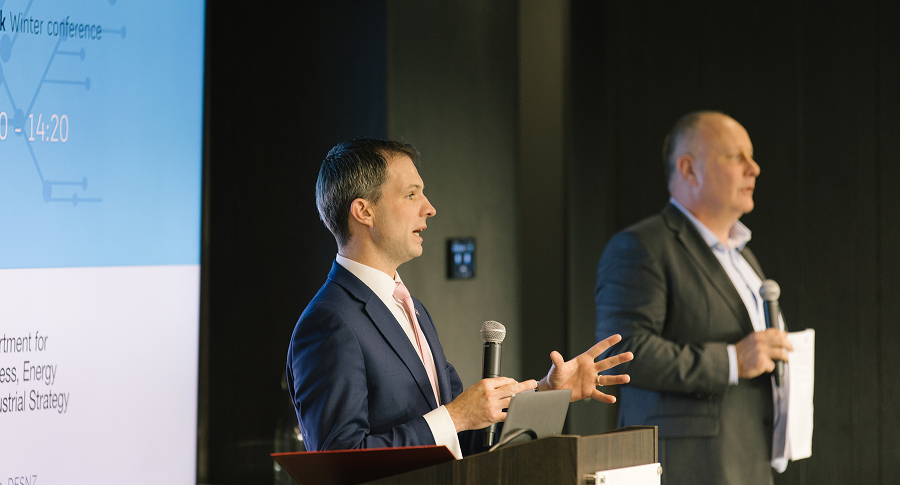Our new and improved final report with National Grid ESO analyses how the future net zero energy system will operate in challenging conditions on a difficult summer day and a difficult winter day in 2035.

Our new and improved final report with National Grid ESO analyses how the future net zero energy system will operate in challenging conditions on a difficult summer day and a difficult winter day in 2035.

Regen has been working alongside National Grid ESO to address the challenge of how a decarbonised power system could operate during more challenging periods of the year. How will a very low carbon electricity system, with a very high proportion of variable renewable energy, significant new demand from EVs and heat pumps, and much greater levels of flexibility, remain flexible enough to deal with the diverse conditions that the British weather and energy system will throw at it?
The ‘A day in the life of 2035’ study provides a snapshot of how a net zero power system could function on a cold, calm and cloudy winter day. The report presents an hour-by-hour analysis highlighting the energy system challenges that must be addressed to ensure system resilience and maintain security of supply.
The report points to a much smarter, better integrated energy system based on renewables that avoids the use of unabated fossil-fuelled generation by drawing on the full range of flexibility solutions to meet the increased demand for electricity from electric vehicles and low-carbon heating systems. The report concludes that:
"The Day in the Life provides insight into how the system could beoperated on a cold, dark, still day in January 2035. It shows that a fullydecarbonised electricity system is achievable and resilient, but requiresstarting the energy transition now. To accompany this work we have created aflexibility timeline with milestones and actions, which outlines what needs tohappen when to make this flexible energy system a reality.”
Becky Hart, strategy manager, National Grid ESO
The last decade has seen a dramatic shift away from coal power and to deployment of 47 GW of renewable energy, which has contributed to a 50% reduction in annual territorial carbon emissions compared to 1990. By 2035, electricity must be supplied predominantly by renewables – solar, wind and a small contribution from other sources such as geothermal and tidal; this future renewable based system will need to be more dynamic, reactive and agile to ensure security of supply.
By showing the tough days for a renewable-based system, our day in the life story shows off the many technologies and innovations which have a role to play in making an efficient, reliable renewable electricity system.
The analysis shows that, whilst we can model a 2035 decarbonised electricity system that works without using fossil fuels, this future is far from certain. To make this model a reality, we need a renewable energy renaissance and to bring together all the above supporting components. This will require substantial, coordinated investment and the mobilisation of all parts of the energy industry, business and energy consumers.
"Building a net zero power system that can operate without fossilfuels even during a low wind winter week will be a major challenge. This study showsthat it can be achieved, but also highlights the scale of transformation thatis needed. The prize is a decarbonised electricity system that reduces the UK’sdependence on imported oil and gas, and achieves a major milestone towards anet zero economy.”
Johnny Gowdy, director, Regen
The major areas for change identified in our report are fundamental to decarbonising the whole of the UK economy, and therefore also in keeping 1.5 degrees within reach. There are other added benefits too: solar and wind are the cheapest forms of electricity (onshore wind being the cheapest of all), and we won’t be as reliant on global gas markets.
While different projected scenarios have some wriggle room on the exact numbers, we’ve got a clear idea of the scale of change; it will require a massive increase in the rate of deployment of renewables (especially considering that in England, that rate was precisely zero onshore wind farms a year in 2021).
The current reliance on global gas markets will be exchanged for a dependence on changeable weather – more statistically predictable, but nonetheless variable. As such, the way we operate the grid will need to adapt to continue to provide reliable electricity. We discuss some of the things which need to be in place in the report, such as:
Given the scale of change needed, it is no surprise that there are outstanding technological challenges in this list. Some of the required technologies/sectors are still in their infancy, because they don’t yet have a strong business case to support the growth and innovation needed. We highlight these outstanding challenges as uncertainties in our picture of the 2035 electricity system.
"A common challenge for a renewables-based power system is how tokeep the lights on when the wind isn’t blowing and the sun isn’t shining. TheDay in the Life 2035 report, grounded in real weather data and systemoperation, illustrates how a net zero system could operate in these conditions,exploring options to meet the biggest challenges and pointing to the innovativesolutions that are beginning to provide answers.”
Jonty Haynes, senior energy analyst, Regen
Click here to view the full-screen webpage.
Sign up to receive our monthly newsletter containing industry insights, our latest research and upcoming events.